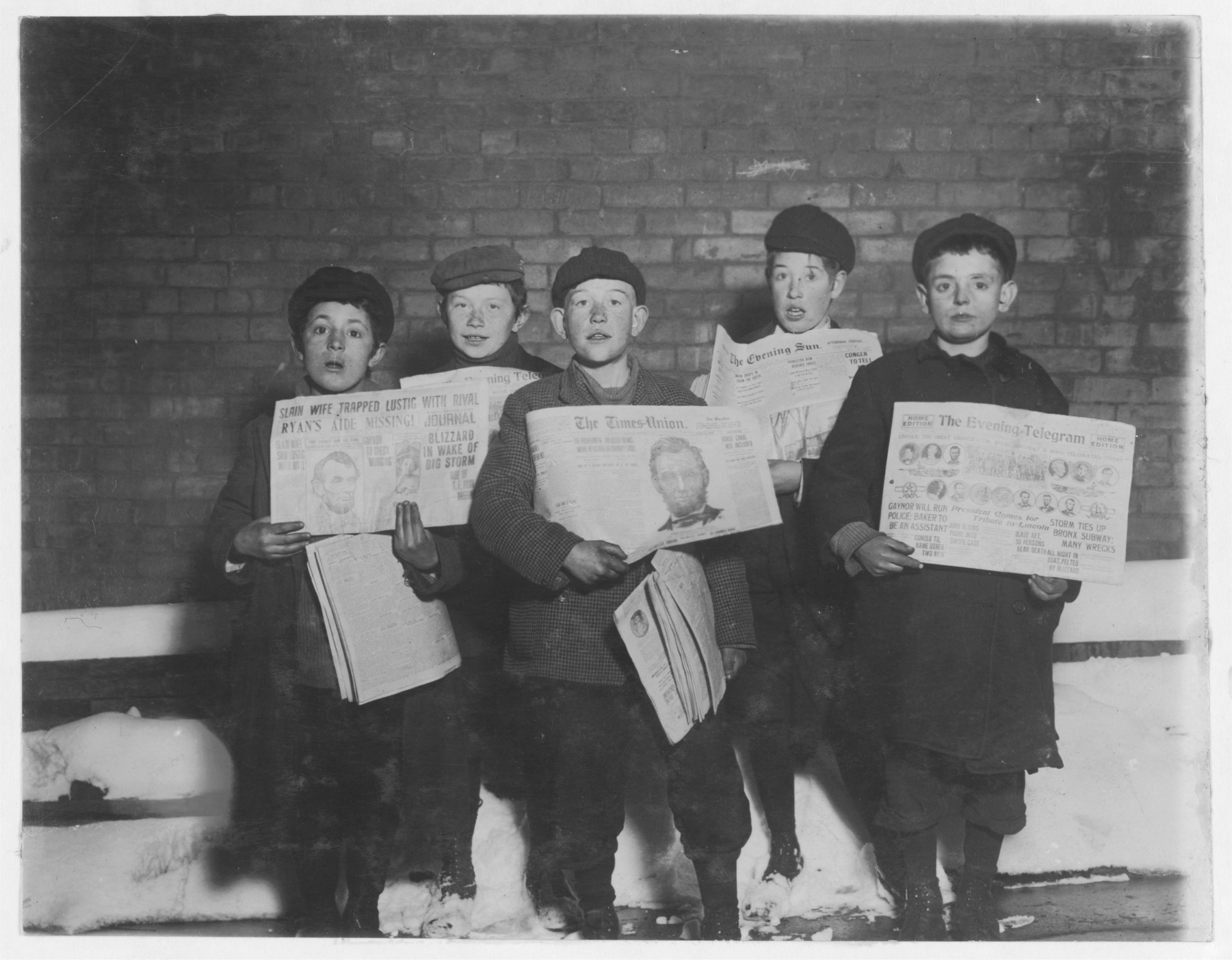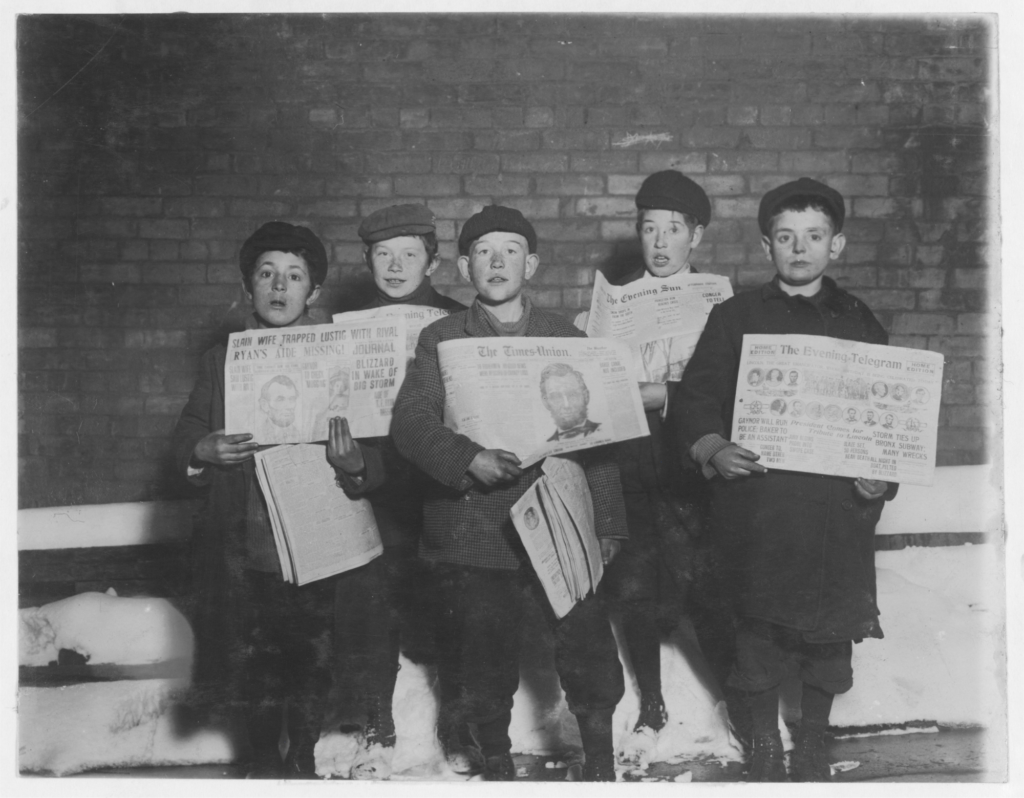Albany Newsies, 1910

Back in February 2010, I wrote a little bit on what I could find about the lives of the newsies who were featured in this well-known Lewis Wickes Hine photograph taken in February 1910. It wasn’t a lot, to be honest. Since that time, a whole lot more resources have become available online that help to fill in local history stories, and I also moved all my local history to a separate site, the mysteriously named Hoxsie.org.

In 2025, I updated this post with vastly more information on the children that Hine photographed, and you can now find that post here:
https://hoxsie.org/2025/01/29/albany-newsboys-1910/
